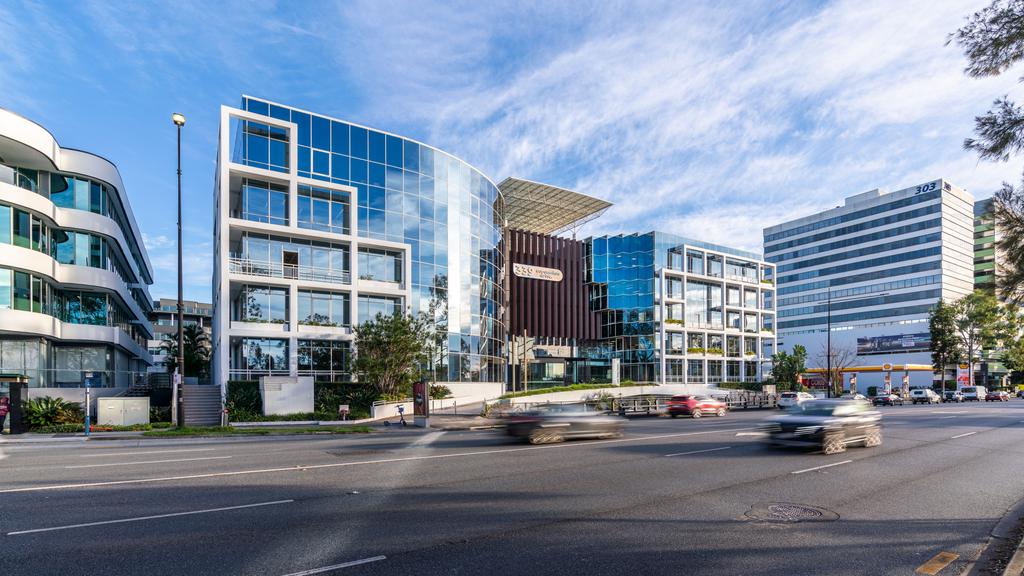Our View: Q4 2025 CRE Market Report
Acure Asset Management provides in-house research, analysis and news bulletins to subscribers on a monthly basis.
Our reports are based on Australian Property and Market trends as they happen – as well as reflective reports on our portfolio and performance.
Subscribe for more tailored News and Insights from Acure Asset Management below or on our Contact page
The Australian property sector has weathered multiple headwinds throughout recent times. Higher interest rates, return-to-office uncertainty, construction cost escalation, and e-commerce disruption are just some of the main contributing factors.
Despite this, capital values across the board in hospitality, residential, logistics, and retail remain stable at 2022 comparable levels.
Vacancy rates remain extremely low, particularly in logistics (2.5%) and residential (1.8%).
The industry is still demonstrating it’s trademark resilience, and demand fundamentals remain in some sectors while others look to be rebounding.
Throughout 2025, we’ve seen the tailwinds of growth start to re-appear.
Population growth is starting to drive long term demand across asset classes – and is only forecast to continue as the nation grapples with a gross shortage in its construction labour force.
Supporting development, federal and state governments continue to pour money into infrastructure, with an estimated $100 billion per year already committed to new projects such as Western Sydney Airport, Sydney Metro, Cross River Rail and more.
The nation also finds itself in the early phase of the interest rate cutting cycle, with expectations for up to five further cuts forecasted amongst most business circles.


Capital and Debt Market Conditions
Growth of Capital Partnerships and Co-Investment Structures
We’re seeing a shift in trend towards capital-light, co-investment structures, Meaning they prefer to co-invest alongside capital partners (such as pension funds, sovereign wealth funds, and private equity).
These structures spread risk, reduce the need for heavy debt, and align long-term capital with development pipelines.
This encourages joint ventures and platform partnerships where developers bring local expertise and investors provide capital, while positioning Australia as an appealing destination for long-term, stable, yield-plus-growth investments.
Australia’s Relative Value and Appeal to Global Investors
Despite global uncertainty, Australian property screens well on relative value metrics, meaning it offers a better combination of income and growth than many mature Asian markets.
Cap rates (yields) in Australia remain higher than those in Japan and Singapore, while rental growth prospects are also strong due to tight supply.
This “spread” in yields provides comfort to offshore investors that they are being compensated for risk.
Strong population and infrastructure growth further enhance the investment case.
Heightened Competition in the Debt Market
Domestic banks and lenders are now competing aggressively to win real estate lending business.
The Reserve Bank’s rate-cutting cycle has begun to lower base rates, which has stimulated more deal activity and borrower demand.
As a result, banks are tightening margins (reducing their lending spreads) and relaxing conditions to secure market share.
This environment is reminiscent of the pre-GFC lending period, when competition among banks was fierce and lending terms were borrower-friendly.
This increased liquidity supports more development feasibility and transaction activity.
It may also increase systemic risk if credit conditions become too loose – but for now, it’s broadly supportive of recovery.
Trends: By Sector
Office
- CBRE’s occupier surveys show that small and medium enterprises have largely managed to restore in-office attendance to desired levels, while larger corporates continue to lag.
- This suggests the return-to-office (RTO) trend is stabilising but has not yet fully plateaued.
- Attendance improvement tends to lag economic confidence and business performance; as hiring picks up, in-office presence generally follows.
- Leasing demand should gradually lift in 2026 as confidence and utilisation strengthen.
- Landlords can expect higher engagement with space upgrades, amenities, and wellness offerings as employers use these to attract staff back in.
- When renewing leases or considering relocation, location quality outranks all other factors, with 83% of tenants rating it as their top priority. Prime CBD and city-fringe precincts with strong transport links will continue outperforming suburban or fringe office markets.
- Older, less well-located B-grade stock may face higher vacancy or need repositioning (via refurbishment or conversion to alternate use).
- This Reinforces the “flight-to-quality” and “flight-to-convenience” themes that have dominated post-COVID leasing behaviour.
Logistics and Industrial
- 71% of surveyed occupiers cited transportation, labour, and fuel costs as their top business pressures.
- These costs now represent a greater operational burden than rent itself.
- Australia’s long supply chains and limited alternative freight options make transport and logistics costs highly sensitive to inflation and fuel prices.
- Occupiers are reassessing network configurations, seeking to locate closer to customers to reduce “last-mile” costs.
- Some are renegotiating rent or opting for smaller but better-located facilities.
- New space take-up is heavily weighted toward new-build, energy-efficient warehouses with high ESG credentials.
- Brownfield retrofits and green-certified developments will attract a rent premium.
- Developers focusing on low-carbon and AI-enabled designs will capture future demand.
- Two-thirds of occupiers now design for automation, requesting greater ceiling heights, wider column spacing, and high-load flooring.
- Expect demand for specialised industrial assets with advanced building specs (e.g. high clearances > 13 m).
Retail and Mixed Use
- Retailers and landlords note that limited evening trading curtails total turnover and centre vibrancy.
- Centres are experimenting with gyms, food precincts, and leisure venues to extend daily activation.
- Council and planning support for mixed-use or later-trading precincts will be key to long-term viability.
- Many A-REITs and developers are adding apartments or build-to-rent towers on shopping-centre sites.
- Mixed-use increases land utilisation and provides a steady residential customer base for onsite retail.
- Expect a structural shift toward urban mixed-use precincts, where living, shopping, and dining coexist.
- CBRE research highlighted ~8,000 new apartments planned on shopping-centre land in Sydney alone.
- Investors gain diversified income streams from retail and residential.
AI and Tech in Real Estate

As 2025 draws to a close, it’s clear that AI isn’t just transforming how we work, it’s reshaping the very foundations of commercial real estate.
Global corporates are now embedding AI at scale. One professional-services firm alone has invested over $1 billion and created 2,000 AI-related roles worldwide.
The message is clear: AI is now a core business capability, not an experiment.
Buildings that can support this transformation with high-speed data infrastructure, ESG compliance, and smart-building systems are becoming the new benchmark.
As companies digitise and workforces become more project-based, AI is accelerating the shift toward flexible workspace models.
Coworking and managed-suite operators stand to benefit as tenants seek shorter, adaptable commitments underpinned by advanced connectivity and cybersecurity.
For landlords, AI opens up more than efficiency, it creates entirely new income opportunities.
Building data can be leveraged to provide insight-as-a-service, helping occupiers optimise utilisation, wellness, and sustainability.
Real estate is evolving into a platform business, where owners become partners in tenant performance.
AI won’t shrink commercial real estate; it will redefine its value.
The future belongs to assets that combine:
- Digital capability
- Sustainability performance
- Human-centric design
In an AI-driven economy, the smartest buildings, those that can learn, adapt and connect will lead the next wave of performance and pricing power.
The Build Up: 2032 Brisbane Olympic Games
The Olympics are driving massive infrastructure and urban renewal across SE QLD (roads, transport hubs, logistics upgrades).
This will have long-term spill-over benefits for industrial and commercial sectors.
Historical precedent (Sydney 2000, London 2012) shows sustained industrial and land-value uplift well beyond the event itself.
New infrastructure enhances accessibility and labour mobility, improving logistics efficiency.
The Olympics will bring temporary demand for office space from organizing committees, media, sponsors, event logistics, security, supporting agencies, and associated services.
Some of that demand may convert to longer-term leases, especially if firms relocate or expand to service new precincts or infrastructure nodes.
Investors should monitor industrial corridors from Brisbane to the Gold Coast and Sunshine Coast, where demand is likely to persist.
Development of multi-user distribution and staging facilities may continue beyond 2032, transitioning from Olympics use to broader logistics.

Overall Takeaways
- Resilience remains the defining feature of Australian real estate.
- Tight vacancies, limited new supply, and infrastructure-backed growth support long-term fundamentals.
- Capital markets are re-engaging, but global competition for funds is intensifying.
- AI, robotics, and flexible working will reshape occupier needs rather than reduce them.
- The Olympic “halo effect” is selective. Growth will concentrate around precincts, transport nodes, and infrastructure corridors, not evenly across all markets.

